Four months ago The Tyee looked in on a volunteer team of divers who pull junk from the bottom of lakes in B.C. and had begun handing their finds to artists.
The question was what creative folks might make out of the soggy debris. Well, the answer is in.
Diving In: The Art of Cleaning Lakes and Oceans is currently being hosted by the West Vancouver Community Arts Council at the Silk Purse Arts Centre from May 4 to 28.
The exhibition is a collaborative effort run by seven art councils including those in Pemberton, Whistler, Squamish, Lions Bay, Bowen Island, West Vancouver and North Vancouver.
The goal is to raise awareness about how much human-produced junk clogs our lakes and oceans.
“We hope visitors come away from the exhibition with a sense of purpose and hope. By seeing all of the unnecessary waste recovered from local waterways and reading the accompanying materials, hopefully, people will realize the dire situation our waters are in and how easily avoidable it is,” said Steven Snider, gallery and communications co-ordinator at the West Vancouver Community Arts Council.
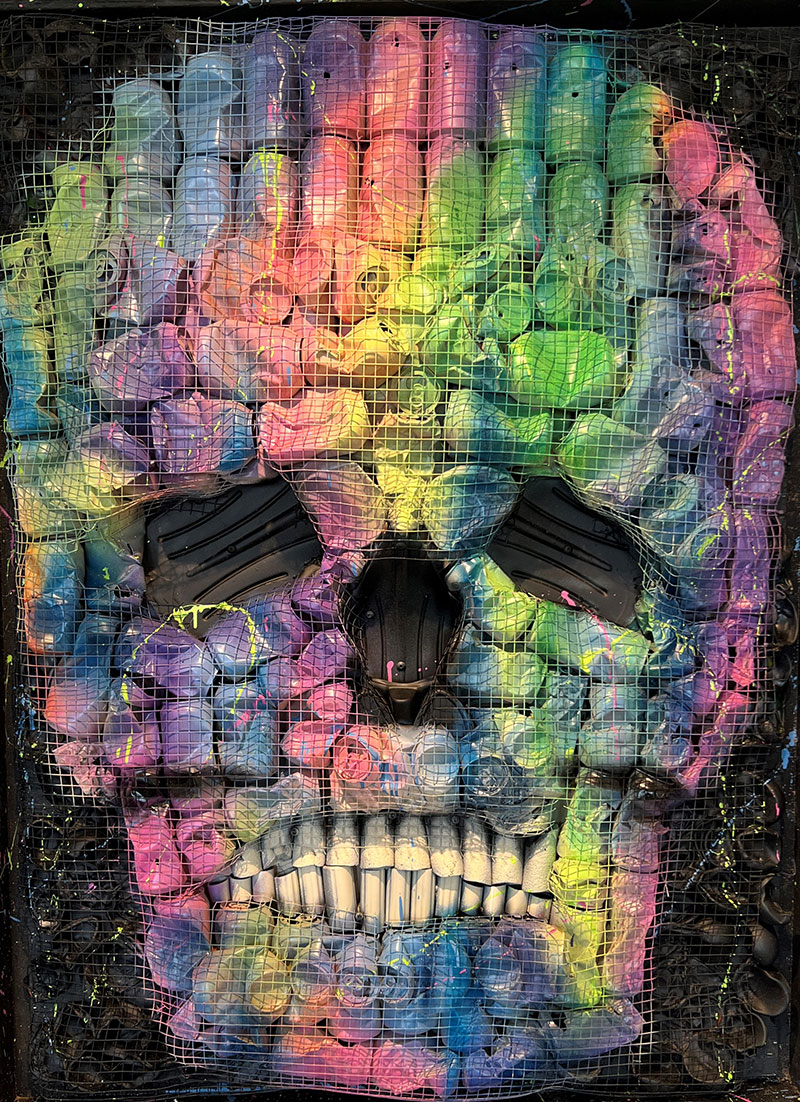
Materials used: plastic paddles, aluminum cans, spray paint, wire.
The art campaign is the brainchild of Amy Liebenberg, executive director of the Squamish Arts Council, who is also a volunteer diver with the Divers for Cleaner Lakes and Oceans, or DCLO.
Liebenberg acknowledges that turning trash into art is not a new idea. What makes the Diving In project different, she says, is the trash collected was submerged. That makes this the first exhibition of its kind in B.C., and so far, it is the largest collective environmental touring show in the region.
It was veteran diver Henry Wang’s original idea to turn some of the trash Divers for Cleaner Lakes and Oceans was collecting into something meaningful. He and Liebenberg brought others on board, including Return-It, local artists, school programs, partners and other sponsors.
Last year, DCLO removed a total of 11,000 pounds of trash from local rivers, lakes and ocean shorelines. That represented the biggest haul in the history of the group’s operation. The majority of the trash was recycled, while the rest was donated to Diving In in order to create something meaningful, and initiate an important conversation about hidden trash in our waters.
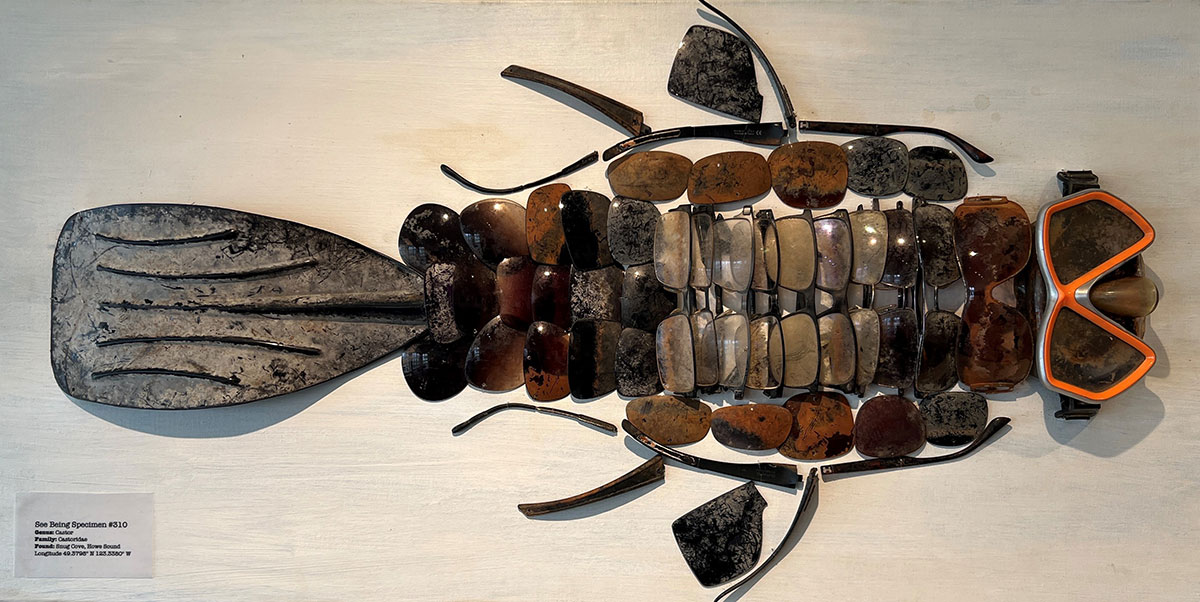
Materials used: plastic paddles, sunglasses goggles, found objects, fishing wire on canvas.
Liebenberg notes that other art exhibits have featured “trash from shorelines or from the surface of the water, like the big garbage patch. An interesting opportunity in this project is to talk about the fact that, when you look at our beautiful pristine shorelines and lakes, there’s a lot that you’re not seeing. And what we’re doing is we’ve surfaced a problem that people often don’t think about, because the waste sinks.”
Eleven artists were handed burlap bags with randomized trash ranging from golf balls, sunglasses, goggles, vape cartridges, beer cans and lures to bullet casings.
“What struck me is the amount of trash that is purposely discarded. The tires, the shopping carts like lures and sunglasses, okay, it’s maybe accidental. But a lot of it is thrown away purposely and for me, that was a real hit in the stomach,” said Monica Gewurz, a mixed media artist from the Lions Bay Arts.
Michael Binkley, a stone sculptor from Squamish Arts Council, couldn’t agree more.
“I don’t think anyone purposely throws their swim goggles overboard. Those are sort of accidental misplacements of our possessions but certainly, golf balls did not magically make their way off a bad shot of a golf course. They were purposely knocked into the ocean. Aluminum cans were purposely deposited in the ocean too,” said Binkley.
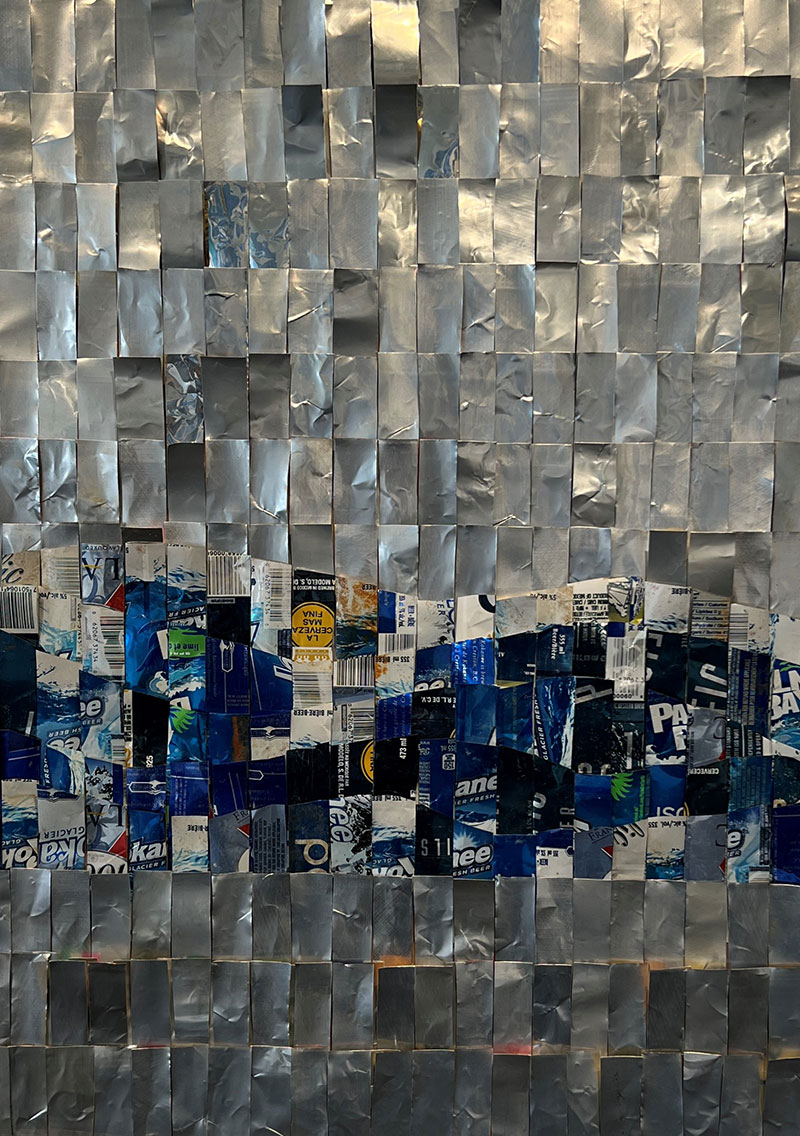
Materials used: aluminum cans.
Liebenberg has a name for the many cans the divers pull off the bottoms of lakes. “We call that party trash, we find a lot of party trash,” she said.
For many of these participating artists, it was their first time working with the various materials and media.
“Ghost nets are a huge problem making up nearly half of the Great Pacific Garbage Patch. And this is when fishing gear and fishing nets that are no longer in use, are still present in the ocean. They’re just kind of floating around, continuing to trap animals. So if you go online, you’ll see many horrible pictures of, turtles for examples, trapped in these things,” said Cath Hughes, a multidisciplinary artist from the West Vancouver Community Arts Council.
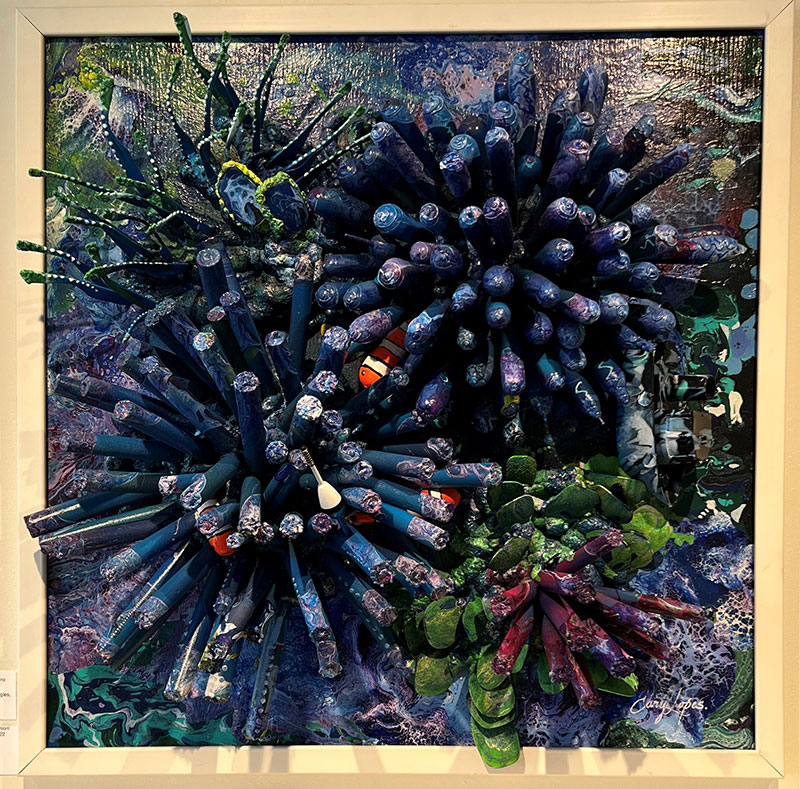
Materials used: flowing water river floats, sunglasses, swimming goggles, toys.
Elizabeth Nankin, an interdisciplinary artist from the Hearth Arts on Bowen Island, set out to tell a story from a scientific point of view. She created four different artworks — or specimens, as she named them — made up of 130 pairs of eyeglasses.
She was inspired by the question: “How would future humanity understand what lived in our oceans before they were completely destroyed?”
“I also was working on a theme of a sense of home. We live in our homes, and we have boundaries with a roof and walls whereas our waters have no boundaries. They touch everyone, and they belong to everyone,” said Nankin.
Artist Monica Gewurz came to wonder about the very materials she has used to make art in the past.
“A lot of artists use acrylic paints, including myself, and a lot of artists wash the brushes and the paint down the drain thinking, ‘Oh, it’s water-soluble. It’s okay.’ No, it’s not okay. It ends up in our food chain,” said Gewurz.
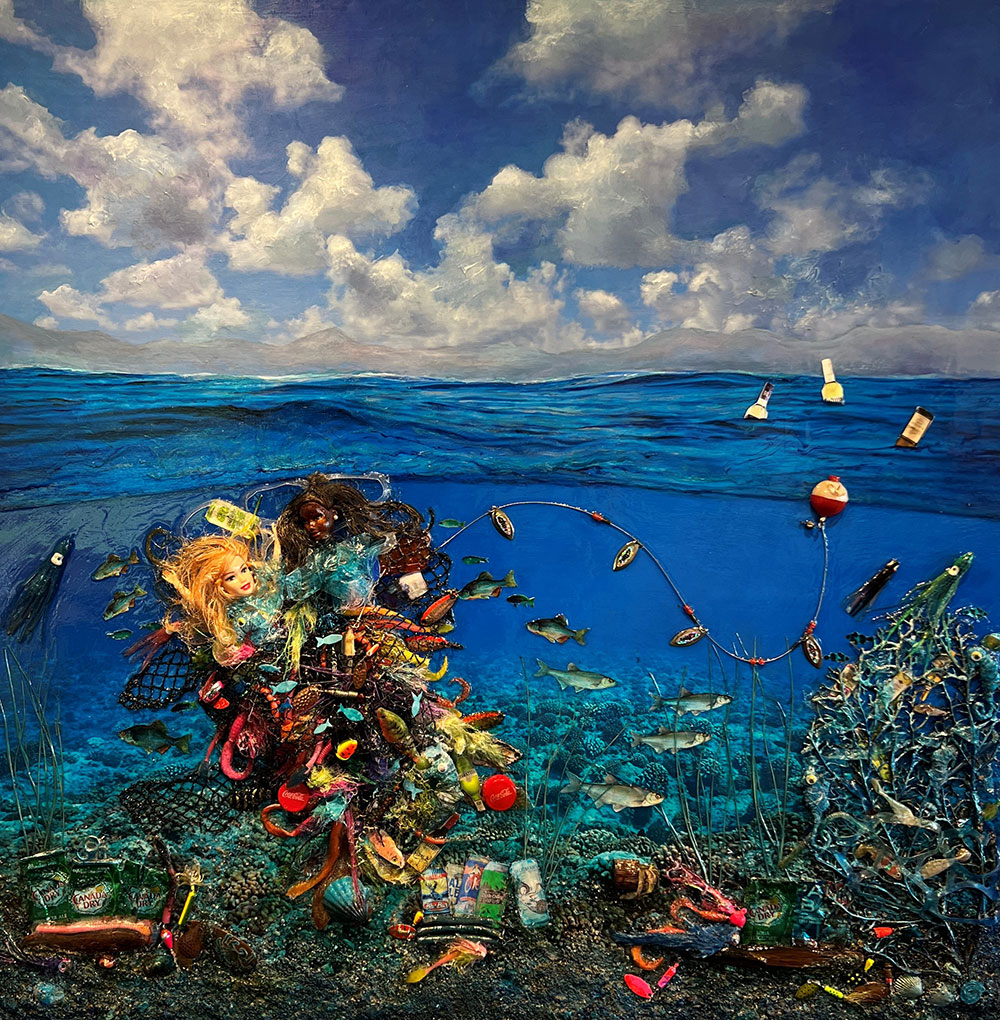
Materials used: acrylic, mixed media including found trash on wood panel.
The artworks in this article and others are being auctioned online until Dec. 9. The proceeds will be split between the non-profit art councils and the artists.
“We’re all working as not-for-profits, and we agreed to so the galleries are not receiving any funding for this,” said Jennifer Lord, executive director of the West Vancouver Community Arts Council.
And some proceeds will fund the completion of a documentary that chronicles this environmental art campaign from its conception to the touring art exhibition.
After the exhibit wraps up at the Silk Purse Arts Centre on May 28, it moves to the Maury Young Arts Centre in Whistler from June 1 to 29. ![]()
